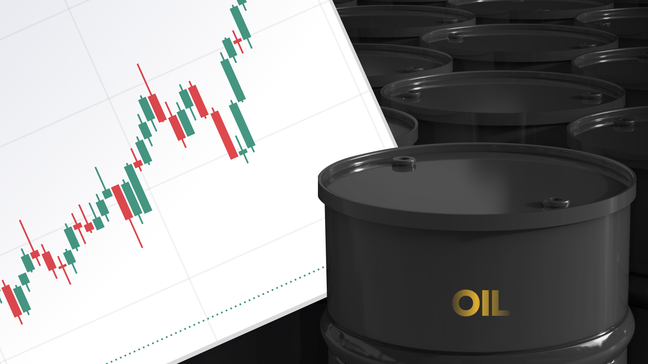Market players consolidate recent losses amid mixed US data and risk catalysts. That said, the previous day’s US job numbers and housing data failed to bolster the latest hawkish bias about the Federal Reserve. Also likely to challenge the US Dollar bulls were comments from the Fed’s Bostic and concerns about softening inflation signals.
With this, the Greenback edged higher while bracing for the weekly gains despite lacking upside momentum of late. The same helps the commodity prices to pare recent losses. That said, Gold struggles with the previous support line whereas crude oil struggles to justify the price's positive fundamental details.
As a result, the EURUSD and AUDUSD print mild gains while GBPUSD remains pressured. Further, upbeat yields propel USDJPY while NZDUSD drops the most among the G10 currency pairs.
On a different page, BTCUSD prints mild gains to snap a two-day losing streak amid spot Bitcoin ETF approval but the ETHUSD lacks recovery at a two-week low as the US SEC delays Ethereum spot ETF approvals.
Following are the latest moves of the key assets:
- Brent oil struggles to extend a two-day winning streak near $79.00, up 0.20% intraday at the latest.
- Gold price edges higher after reversing from five-week low, mildly bid near $2,027 as we write.
- USD Index lacks upside momentum near 103.40 but stays on the way to posting weekly gains by the press time.
- Wall Street again closed with minor gains and the Asia-Pacific stocks edged higher. That said, equities in the UK and Europe remain mildly bid during the initial hour.
- BTCUSD prods two-day losing streak near $43,000 but ETHUSD lacks recovery moves while posting minor losses near $2,460.
US Dollar bulls take a breather but fail to inspire Oil buyers…
Although the US Dollar lacks upside momentum, the commodities struggle to rise amid fears of softer demand from China, the Eurozone and the UK. However, strong India growth and the US soft landing concerns are putting a floor under the prices of Crude Oil and Gold. Furthermore, expectations of more energy demand in the year 2024, per the International Energy Agency (IEA), join the geopolitical tensions in the Red Sea to suggest further advances of the black gold.
Elsewhere, the US Initial Jobless Claims and Building Permits strengthened the market’s bias for a delay in the Fed’s rate hike by printing upbeat figures. On the same line were comments from Atlanta Fed President Raphael Bostic who said that the baseline is for rate reductions starting in Q3 while adding, “Care needed not to cut Toussaint and risk renewed demand and price pressures.” Also, optimism about the passage of the US stop-gap funding to avoid the shutdown and geopolitical tensions in the Red Sea, as well as the Chinese stock rout, are extra catalysts that underpinned the US Dollar’s haven demand.
On the flip side, Wall Street Journal’s (WSJ) Fed watcher Nick Timiraos Core PCE modeling points to the downside in the inflation and backed the dovish forecasts for the US central bank, which in turn challenged the US Dollar bulls and triggered the Greenback’s retreat. Furthermore, downbeat prints of the US Housing Starts and Philadelphia Fed Manufacturing Index also challenged the recently hawkish bias about the Fed and tested the US currency.
With this, the US 30-year and 10-year Treasury bond yields extend the previous recovery but the interest rate futures suggest slightly less market support for the Fed rate cuts in March, as well as almost certain cases of witnessing no rate change in January. That said, the US Dollar Index (DXY) edges higher but lacks upside momentum as Wall Street snapped a two-day losing streak and bears in the Asia-Pacific zone also take a breather.
- Strong buy: USDCAD, USDJPY
- Strong sell: Crude Oil, US Dollar, GBPUSD
- Buy: BTCUSD, ETHUSD, Nasdaq, Gold
- Sell: DAX, FTSE 100, BTCUSD, AUDUSD, EURUSD
Focus on more US data, ECB’s Lagarde and Fed talks…
Today’s preliminary readings of the University of Michigan (UoM) Consumer Sentiment Index (CSI) and US inflation expectations will join the final round of the Federal Reserve (Fed) policymakers’ speech before the January FOMC to entertain traders. Also important will be European Central Bank (ECB) President Christine Lagarde’s speech at the World Economic Forum (WEF) in Davos.
Given the ongoing chatters about a delay in the rate cuts from the Fed and the ECB, buyers of the US Dollar and Euro will seek clues to confirm the hawkish bias. However, the early signals aren’t promising and hence can allow the consolidation of the weekly moves. Elsewhere, Crude Oil is up for the closing week on the positive side but will stay in the medium-term range amid economic uncertainty.
May the trading luck be with you!




